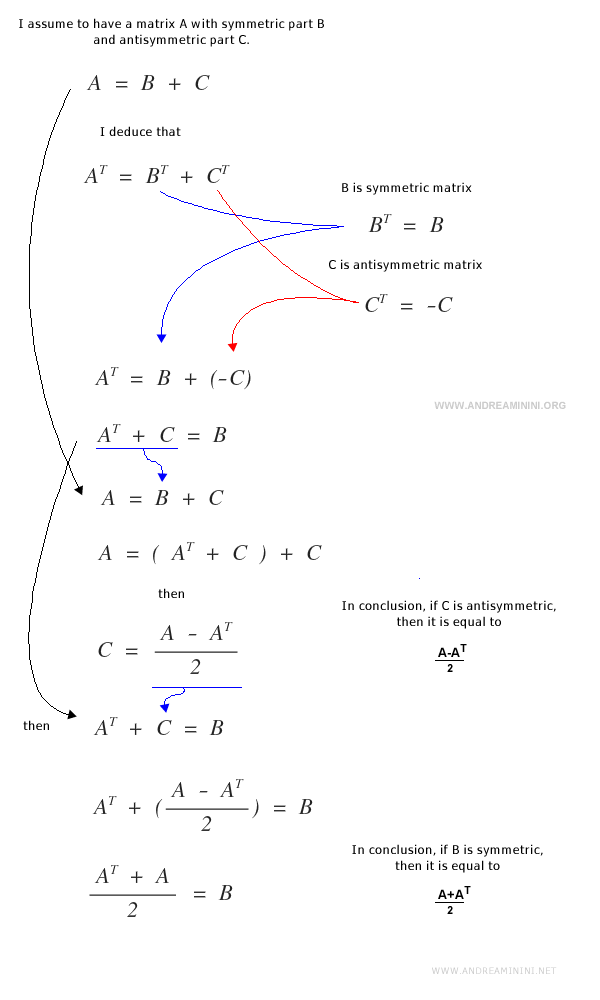Antisymmetric matrices
A matrix M is called antisymmetric if its elements above the main diagonal are equal in magnitude but have opposite signs to the corresponding elements below the diagonal.
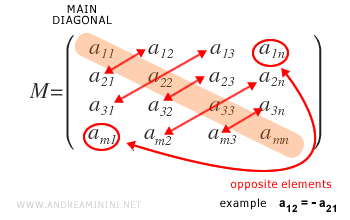
We denote an antisymmetric matrix as ASM, where AS stands for Anti Symmetric.
Example of an antisymmetric matrix: This 3x3 matrix illustrates an antisymmetric matrix, where each element aij matches the corresponding element aji but with the opposite sign.

The element aij is simply found by swapping the row and column indices (aij ⇒ aji).
In an antisymmetric matrix, for any i and j from 1 to n, elements are related by aij = -aji.
![]()
Relationship between an antisymmetric matrix and its transpose
If a matrix is antisymmetric, its transpose MT is equal to -M.
![]()

Only square matrices can be antisymmetric
Rectangular matrices cannot be antisymmetric since their transposes have different dimensions than the original matrix.
Additionally, rectangular matrices lack a main diagonal.
The zero diagonal in antisymmetric matrices
In an antisymmetric matrix, all elements on the main diagonal are zero.

Why is the diagonal zero in antisymmetric matrices? The diagonal elements must be zero because, in the transpose of a square matrix, diagonal values (aij = aji) stay the same, and zero is the only value equal to its own opposite.
Can a matrix be both symmetric and antisymmetric?
The zero matrix is the only matrix that can be both symmetric and antisymmetric.

How to calculate an antisymmetric matrix
Any square matrix can be converted to an antisymmetric matrix.
To find the antisymmetric form of a square matrix M, we use this formula:

A practical example
Consider this 3x3 matrix, which is square but not antisymmetric.
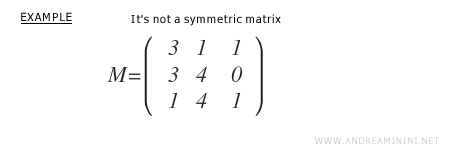
To find its antisymmetric form, we first calculate its transpose MT.
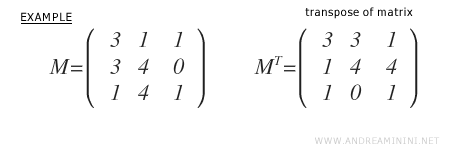
Then, we apply the formula 1/2·(M - MT).
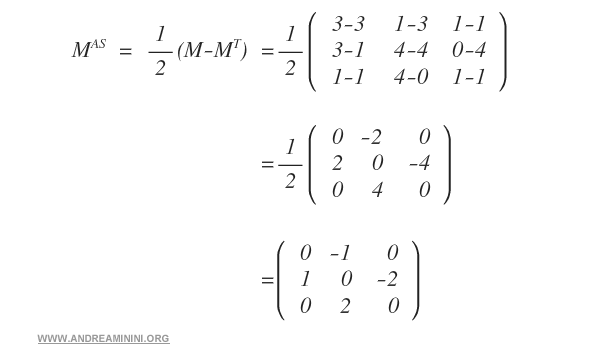
This gives the antisymmetric matrix AAS for matrix M, where the main diagonal is zero and opposite elements are symmetrically positioned across it.
The sum of symmetric and antisymmetric matrices
The sum of the symmetric matrix MS and the antisymmetric matrix MAS equals the original matrix M.

Note: MAS is called the antisymmetric part of M, while MS is the symmetric part. If M is symmetric, then its antisymmetric part is zero; similarly, if M is antisymmetric, its symmetric part is zero.
Let’s go through a practical example of calculating both the symmetric and antisymmetric parts for this square matrix.
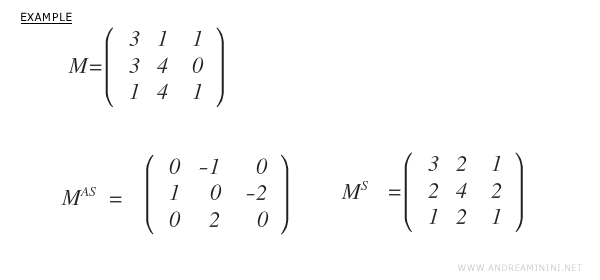
The sum of MAS and MS gives the original matrix M.

Proof:
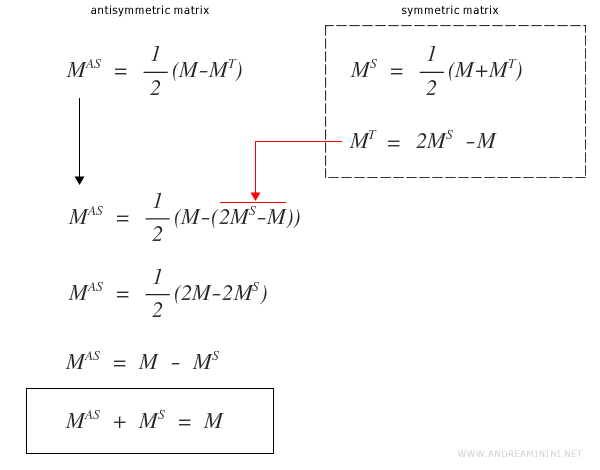
Proving the uniqueness of the symmetric and antisymmetric parts requires a bit more detail.
